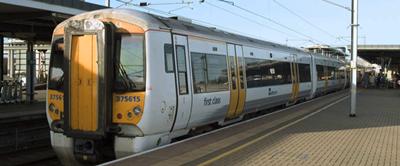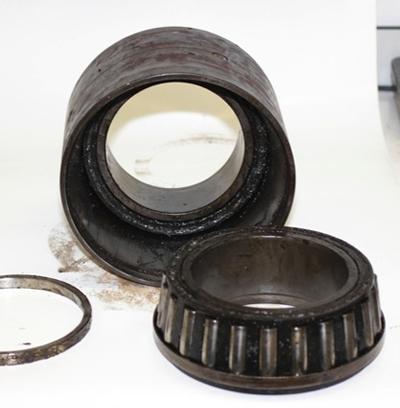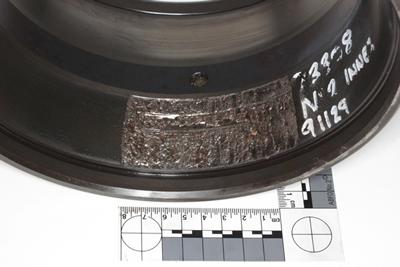Research project: Investigating rail axle bearing damage
Working with Perpetuum Ltd to monitor and examine failing rail axle bearings.
Working with Perpetuum Ltd to monitor and examine failing rail axle bearings.
Rail vehicle axle-bearing failure is a serious issue often resulting in service delays and potentially fire and derailment, with obvious risks to life. A ‘dead’ train on the railway line has implications for customer perception, operator and manufacturer reputation, along with large costs from penalties, recovery, train availability and repairs.
Southeastern have fitted bearing sensors to their Electrostar fleet; these sensors identify rail axle-bearing degradation. An on-going study funded by Perpetuum Ltd (the sensor manufacturer) allows ex-situ rail axle bearings with recorded vibration histories to be forensically examined. The ultimate aims of this work are (1) to link vibration signatures to levels of physical damage and (2) to identify any common factors that are causing bearing failures.

Each train (unit) comprises of 3 to 5 passenger cars; each car has a bogie at either end containing two wheel-sets (i.e. 4 wheels). Therefore the typical train has 32 axle bearings. The system provides one sensor per wheel and highlights when a sensor detects an increasing vibration signature, isolates it as a bearing or wheel issue and reports it in real-time to the train operator. The bearing/wheel can then be removed/maintained at the depot at the next maintenance cycle.
Each Wireless Sensor Node (WSN) acts independently to the other 31 (assuming a 4 car train), turning on, recording data and wirelessly returning key parameters to a central unit on board of the train. This unit forwards the data to an Internet Cloud Database. The WSNs are self-powered by vibration harvesting. This emerging technique has been made possible by the decreasing power budget of sensor and wireless technologies.

The sensor at the heart of the WSN is a tri-axial accelerometer that records 16,000 points per second per axis, aligned to record the X (vertical), Y (along the train) and Z (direction of the axle) accelerations present in the system. The vibration data along with the train number, wheel position, date and time, speed of the train, Global Positioning System (GPS) location, direction of travel and local temperature are all transmitted.
Using the on-board condition monitoring sensor an operator can look only for changes in vibration/temperature. The absolute values, although measured, are lacking in meaning and any thresholds of the system are arbitrary. The ultimate deliverable of this project, which will have a direct and immediate impact to the industry, is to produce a feedback loop of knowledge where an accurate assessment of bearing damage and remaining life can be correlated to in-service measured parameters of bearing vibration. This will provide the ability to set meaningful thresholds to axle monitoring. Using a dependable diagnostic system, operators could:
The large number of monitored bearings (nearly 5,000) has provided this research project with access to several bearings to examine. The techniques and approaches adopted to examine the bearings need to fulfil several requirements, produce quantifiable values describing the level of damage to each bearing; provide opportunities to observe the damage mechanisms; allow in-depth analysis of possible causes or influencing factors; repeatability; take place in a systematic order (i.e. non-destructive first).


Current work is progressing to examine the vibration history of the bearings in conjunction with the resultant physical damage. Papers detailing the published results so far (along with related background work) can be found on the tab above.
We are grateful to Perpetuum for their current funding. EPSRC for their past funding (IAA- KTS). Also Southeastern for their access and support of this project.
Engineering and the Environment